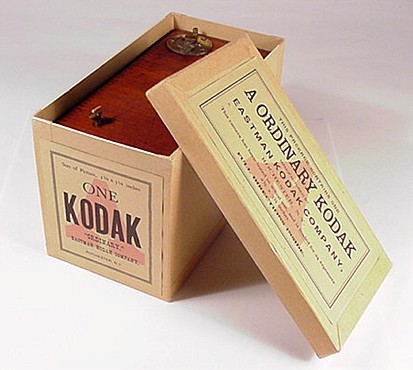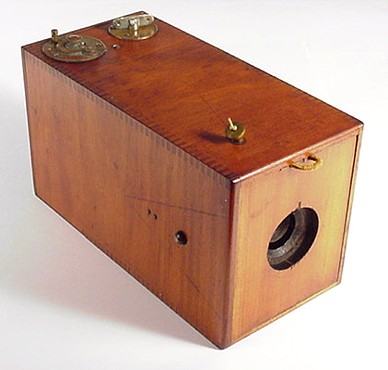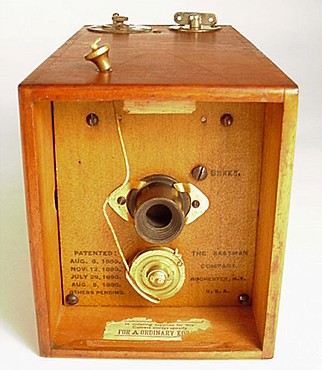
A Ordinary Kodak Camera and Box

Eastman Kodak advertised the A Ordinary Kodak camera as the Young Folks' Kodak. Priced at $6.00 in the early 1890s, the A Ordinary model was the least expensive in Kodak's entire line. Given the price I imagine that Kodak needed to market the A Ordinary to financially well-off parents.
If I was a "young folk" at the time, and could afford the expense of film and processing, I would have been ecstatic receiving this camera as say — a birthday present.
Kodak's advertising emphasizes that the Ordinary line of cameras should not be considered cheap, but rather good value for the money. I agree. The camera is solid and well made. The lens is fixed-focus, the shutter has a single instantaneous speed and the lens aperture is fixed. Kodak advertised that a boy or girl of 10 could easily learn to take good quality photographs with this model. The only feature to add that could have improved the chances of taking a good shot would be a viewfinder. But then I find children have stronger powers of concentration than adults, so they probably adapted well to the challenge of aiming the camera.
Altogether, there were three models in the Ordinary line - models A, B and C. The letters mainly denoted different film sizes, although the model C was special in that it could accept either roll-film or glass plates. The model A created a 2 3/4 x 3 1/4 inch image, the model B created a 3 1/2 x 4 inch image, and the model C produced 4 x 5 inch images. All Ordinary camera models accepted roll-film for 24 exposures.

Notice an angular line scribed in the side of the camera body. A similar line is scribed in the top, but it is difficult to see in this photograph. The camera does not have a conventional viewfinder. Instead, the lines are used to aim the camera. The camera can be held for vertical or horizontal shots - the reason for lines on top and side.
The black button protruding from the camera's side is the shutter release. The shutter is armed by pulling a string. A brass "pull" tied to a string can be seen on the camera's top near the front. The next image makes this clearer. My No. 2 Kodak camera page discusses the string-set shutter in more detail.
There are two brass mechanisms at the back of the camera. The one on the right is the film winding key. On A, B and C Kodak cameras, the winding mechanism has an automatic stop, an improvement over the earlier string-set Kodaks. The brass gizmo on the left is the automatic stop mechanism, frame counter and wind release. After winding the film and taking a photograph, the release was pressed to allow the wind key to turn freely again. The frame counter indicates how many exposures have been taken.
A loop of leather can be seen at the top front of the camera. This "pull" was used to remove the front cover from the body for access to the lens. On this string-set model, however, the removable door does not seem an important feature, unless perhaps to give better access for cleaning the lens, or to untangle or replace a broken string. On some models, the No. 2 Kodak camera being an example, removing the door gives access for setting the lens aperture.

This image shows more clearly the shutter arming string and brass pull. A paper label in the interior reminds the owner to specify A Ordinary Kodak film when ordering new rolls.
A similar series of cameras named the Daylight Kodak was introduced at the same time as the Ordinary line. Both camera lines were sold between 1891 and 1895. The distinguishing characteristics of Daylight Kodaks were: daylight film loading, a reflex viewfinder and leather covering. The A Daylight, identical in other respects to the A Ordinary, sold for $8.50.
This A Ordinary Kodak is one of my favorite string-set models, and in fact, one of my all-time favorite cameras. It is petite for a camera of this vintage, measuring 3 1/2 x 4 x 7 1/4 inches and weighing 17 ounces. I like its appearance, having a preference for small cameras in natural, uncovered wood.
Kodak's advertising stressed that this camera could be operated simply in four steps: push the lever to release the film; turn the key; pull the cord; press the button. Kodak would do the rest.

|
Page created September 5. 2001; updated December 20, 2020
|